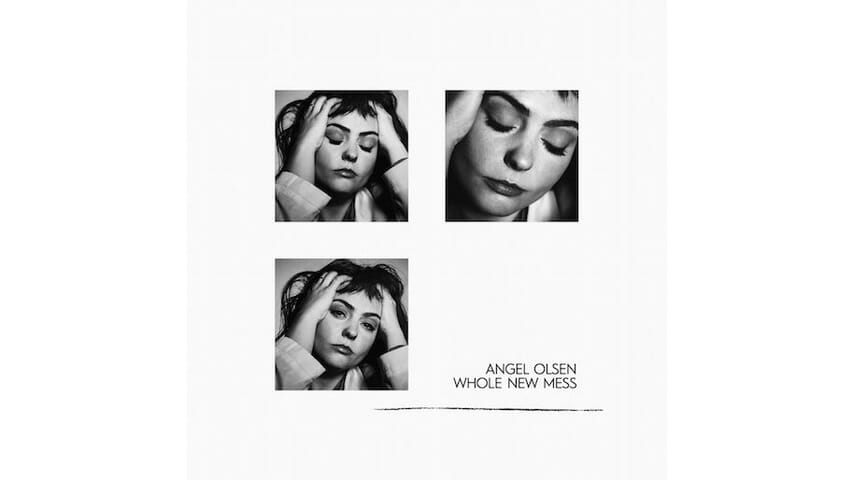Angel Olsen Goes Back to Basics on Whole New Mess
The singer/songwriter returns with a bare-bones approach to heartache on her new(ish) record

When All Mirrors was released in 2019, Angel Olsen had a different, earlier version of the record initially set to drop at the same time. Before bringing on a 12-piece string section and a host of other studio flourishes, she spent 10 days recording in The Unknown—an old Catholic-church-turned-recording-studio situated in Anacortes on the coast of Washington. Those sessions, which resulted in nine early versions of tracks that later appeared on All Mirrors plus two other original songs, are finally here in the form of Whole New Mess.
Aside from those two new tracks, it’s worth wondering whether this album is just a glorified collection of demos. While the songs here share the same underlying structure as their later versions on All Mirrors, not only is the instrumentation completely overhauled—with All Mirrors’ lush string sections and electronic drum kits paired down to basically a guitar, mic and a few hints of organ—the mood of the tracks and the album as a whole come across subtly but significantly different. Both records are without a doubt on the sadder end of the feelings spectrum, but where All Mirrors presented Olsen at her most enigmatic, wrapped up in a sort of cosmic mix of sorrow and rage rising above layers of ornate production, Whole New Mess stands on its own in presenting something raw, vulnerable and haunting.
All Mirrors was an aesthetically bold step for Olsen, but it was also her at her most guarded. The distilled melancholia in older songs like “Heart Shaped Face” or freewheeling anger on “Stars” didn’t break through as much from under the album’s meticulous arrangements. It was still an emotionally intense album, but its elaborateness at times came across as something more to be admired than felt. On Whole New Mess, the rawness at the heart of these songs takes center stage, nowhere more distinctly than on its penultimate track “Chance (Forever Love).” The difference between these two versions capture the distance between the two albums. The original sounded personal but distant, with its baroque pop giving Olsen a lavish backdrop to collapse into with her sorrows. The version on Whole New Mess, however, sounds as intimate as an argument between two people in a room, with its nerves unpolished and exposed until it ends not with a crescendo of strings, but Olsen humming to herself alone.
-

-

-

-

-

-

-

-

-

-

-

-

-

-

-

-

-

-

-

-

-

-

-

-

-

-

-

-

-

-

-

-

-

-

-

-

-

-

-

-








































